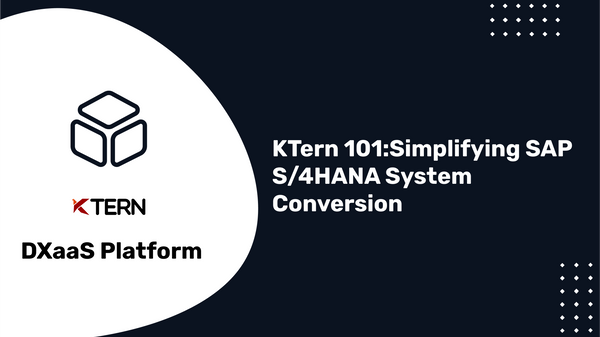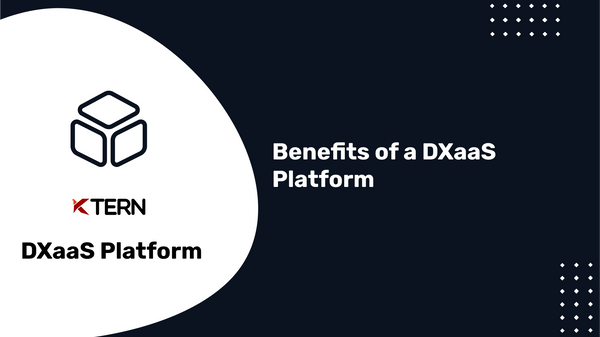How SAP ECC Systems can be migrated to S/4HANA ?
Every Business needs to update its technology and adapt to the changing needs and market conditions along with it are the challenges in moving to the new SAP S/4HANA Product Suite. The article focuses on how SAP ECC Systems can be transformed and the key steps involved during the transformation.
Try a whole new experience of hearing this article as a podcast episode :
Podcast on how to migrate SAP ECC to SAP S/4HANA
Table of contents
- How do I get started?
- Start by creating a high-level plan
- Understand your current landscape
- What are the different ways of moving to S/4HANA?
- Conduct Feasibility Analysis
- Are all the solutions and solutions available on ECC also available on S/4HANA?
- What are the advantages of moving to S/4HANA?
- The challenges your company may face transitioning from ECC
- Next Step
How do I get started?
- Start by creating a high-level plan
- Understand your current landscape
- Identify different ways of moving to S/4HANA
- Conduct a feasibility analysis
- Are all the solutions and solutions available on ECC also available on S/4HANA?
- Identify the advantages of moving to S/4HANA
1. Start by creating a high-level plan
Take into account your current situation, identify the applications that you want to run on S/4HANA, and identify the business case for moving to S/4HANA. The following questions will help you get started:
- What is your current SAP system landscape?
- How many systems do you have?
- How many users do you have?
- Which version of SAP are you currently running?
- Do you have any custom developments in place?
Identify potential challenges and risks. Some examples:
- What are your key user applications?
- Which parts of your application landscape will be affected by this migration and what will be the impact on business processes in these areas?
- Are there any processes that use non-SAP systems or data sources (e.g., Unix jobs, mainframe files)?
- What are your current resources for supporting the existing systems and how will this change after migration to S/4HANA?
- Are there any upcoming projects that would need to be integrated with the new system (e.g., CRM, BI)?

2. Understand your current landscape
Understanding your current landscape and the way your business operates is key to plan your SAP S/4HANA Transformation. You would need to have a view of the impacted stakeholders because of the transformation so that you could foresee the effort from your business. This plays a pivotal role in making your transformations truly business led.
Consider conducting design thinking workshops with end-users (key users). These workshops should focus on:
- Reviewing business process flows;
- Identifying pain points;
- Understanding critical success factors;
- Determining key process improvement opportunities;
- Collecting requirements for future capabilities needed;
- Discussing required changes or extensions to standard functionality based on regulatory or other requirements
In order to address challenges in knowing your business impacts and the stakeholders involved, KTern.AI helps with its process mining that helps with providing detailed insights of your current landscape.
3. What are the different ways of moving to S/4HANA?
There are two options: New implementation and System Conversion which are opted by the industries worldwide. While there is also a Bluefield Approach which involves Selective Data Transition. I would like to focus more on the below 2 approaches in this articles
- New implementation - start from scratch
- System Conversion - existing data
System Conversion - data migration can be done in two ways:
- Using the migration cockpit
- Using SAP Data Services
New Implementation
The first option is called New Implementation. This is where you start from scratch and decide on the level of functionality that you want to implement in your organization. There are up to three different levels-SAP Best Practice, SAP Activate or a Customized Project for example. You will also have the opportunity to activate various S/4HANA modules and applications as well as preconfigured business processes based on Best Practices from SAP. I will go into more detail about this methodology at a later stage of this blog series.
System Conversion
The second option is called System Conversion and involves converting an existing ECC system to S/4HANA (on premise or cloud). You can choose between In-Place conversion or Landscape Transformation which I will explain in further detail later in this blog series.
What is the recommended timeline?
- Transitioning to S/4HANA requires a lot of planning and testing
- The timeline depends on the size of the company and the industry
- Planning should be done in stages
- You need to check for compatibility of your existing solutions with S/4HANA
The timeline for the S/4HANA transition depends on the size of the company and the industry. The process requires extensive planning, testing, and evaluation of your existing solutions to check how compatible they are with S/4HANA. To facilitate a successful move, it is recommended that you break down the move into phases or stages.
- Phase 1 includes preparation and feasibility analysis
- Phase 2 includes project plan development with various timelines and options
- Phase 3 includes implementation based on the business goals formulated in phase 1
4. Conduct Feasibility Analysis
Going from a traditional SAP ECC system to S/4HANA requires a lot of planning, testing, and preparation. The timeline for the transition will depend on many factors such as the size of your company and your industry, but in general, it will take several months or even years. You can create a solid timeline by breaking the project up into stages that you can tackle sequentially:
- First, learn about S/4HANA capabilities.
- Next, identify what aspects of your current system won't work well and need improvement.
- Then, decide which business processes are most important to transition first (i.e., what systems do you need up and running immediately after the move?).
- As part of this third stage, you should also conduct compatibility checks on all your existing solutions to make sure they will still run smoothly when integrated with S/4HANA Cloud and other new tools you want to add to the mix during the transition phase
The planning process should be done in stages:
- System Discovery: Locate all instances of your SAP landscape and connect them with KTern.AI's Digital Maps
- Process Analysis: Identify high-risk areas where changes will need to be made - such as the finance or supply chain modules - by analyzing your current business processes.
- Functional Mapping: Test how your existing solutions integrate with S/4HANA, and identify gaps so you know which ones to replace.

5. Are all the solutions and solutions available on ECC also available on S/4HANA?
No. SAP is continuously improving the S/4HANA solution and new versions are released once every quarter. However, some of the add-on solutions available on ECC are not available on S/4HANA, and in that case, it is recommended to migrate to a different solution or simply live without the functionality. Your company may have deployed custom solutions or other add-ons specific to meet your needs and these should be re-evaluated during the project, including their compatibility with S/4HANA.
- Some ECC solutions are not available on S/4HANA like Business Functions
- You will need to migrate to a new solution or go without
- Keep solution compatibility in mind when planning the migration
- Re-evaluate your solutions to see if there are solutions that can be done without. Eg. your 3rd party Add Ons
SAP has announced that the long-term strategic direction for all SAP solutions is on a single code line. This means that some ECC solutions will not be available in the new S/4HANA solution. As a result, you will have to plan on migrating to an alternative solution or going without. Keep in mind that your current ECC solutions and customizations may not be compatible with your new S/4HANA system. For example, if your company is using SAP Human Capital Management, it will not work on S/4 HANA unless you migrate to SuccessFactors Employee Central before making the change
SuccessFactors Employee Central is different than SAP's Human Capital Management, so this solution may require additional resources and expense
Another option is to upgrade to SuccessFactors HCM Suite (which includes Employee Central) and add Talent Management modules such as Performance & Goals
There are several factors to consider when deciding which option is best for your organization:
- Whether your existing systems will be supported after 2025 (SAP plans to end support for ECC by 2025)
- The cost of upgrading, including any customizations needed
- Additional employee training expenses
Check out the latest roadmap here: SAP Product and Solution Road Maps
For example, any company using the Finance Manager add-on for ECC will need to migrate to a different solution as this is not available for S/4HANA – but this is just one example, so please check your own solutions and make sure that you consider whether there are solutions you could do without or alternatively if there might be a newer solution you could use instead.
6. What are the advantages of moving to S/4HANA?
It's not hard to imagine the user experience improvements that SAP is hoping to bring with S/4HANA. The feature set is broad, and by now you've probably heard about some of them: information re-use, more agility, reduced hardware costs, and increased business agility. These are all compelling reasons for businesses of all sizes to consider a move to S4HANA. However, there are also some features that SAP hopes will help us get there: easier data model creation through 3rd party tools integration, custom apps, and automated reporting.
Let's look at what each one of these might mean for you as an end-user.
While you may not be ready to upgrade right away, it's important to understand the advantages of moving to S/4HANA in order to make an informed decision when the time comes. At its core, S/4HANA is a platform that simplifies business processes, enhances user experience, and improves data security.
To start with, if you move your ERP system to S/4HANA Cloud, SAP will take care of maintenance and hardware costs for you. You'll also no longer need additional hardware or software for data warehousing purposes; all data can be stored within one system. This greatly reduces redundancies and streamlines your business processes.
SAP calls this approach “real-time operational analytics” as it allows users from all departments access to live information at any time. While this feature is available on-premises too (thanks to smart data integration), it's especially convenient in cloud solutions where large amounts of RAM are available at a lower cost than on-premise offerings – no need for large investments in infrastructure just so they can operate better!
In addition, because your apps will be running through clustered servers instead of individual ones like before, they're going to perform much better under heavy loads!
Here's the summarize some of the advantages of S/4HANA,
- Improvements to the user experience
- Simplified data model
- Integration of data from multiple sources
- Ability to create custom apps
- Increased business agility
- Improved data security
- Reduced hardware costs
While these key steps could help plan your S/4HANA Transformation, it is very important to consider the challenges and the path to S/4HANA.
SAP S/4HANA is a robust solution, but you need to be aware of the challenges your company may face transitioning from ECC.
- You need to understand your SAP ECC first before planning
- You need to have a clear idea of business benefits
- Understanding the timeline of the project
- Clear business case and stakeholder buy-in
- The challenges of moving to S/4HANA
- What to do if you experience problems
SAP S/4HANA is a robust solution, but you need to be aware of the challenges your company may face transitioning from ECC. As with any migration to a new system, there are both pitfalls and opportunities that you need to be prepared for. Below are some important considerations as you begin planning your journey to SAP S/4HANA.
Before embarking on the move, take these steps:
- Ensure you have business process blueprints for all your business processes. If not, consider building them first before moving to SAP S/4HANA.
- Identify use cases that drive value for your company and map those processes as well. These will help guide your decisions during the transition and ensure you’re getting the most out of SAP S/4HANA when it’s up and running.
- Review which add-ons and customizations will not run in SAP S/4HANA so that you can budget accordingly if modifications are required. This includes custom code developed in the past by consultants or internal resources as well as add-ons purchased from third parties (Vendor Master Cleansing Tools).

Next Step
You have reached the end of this article, I hope this was helpful and if you are embarking on your SAP Transformation journey and would like to get your business case built. Check out our Digital Transformation Platform, KTern.AI or contact us for a one on one demo that could help you get started.




